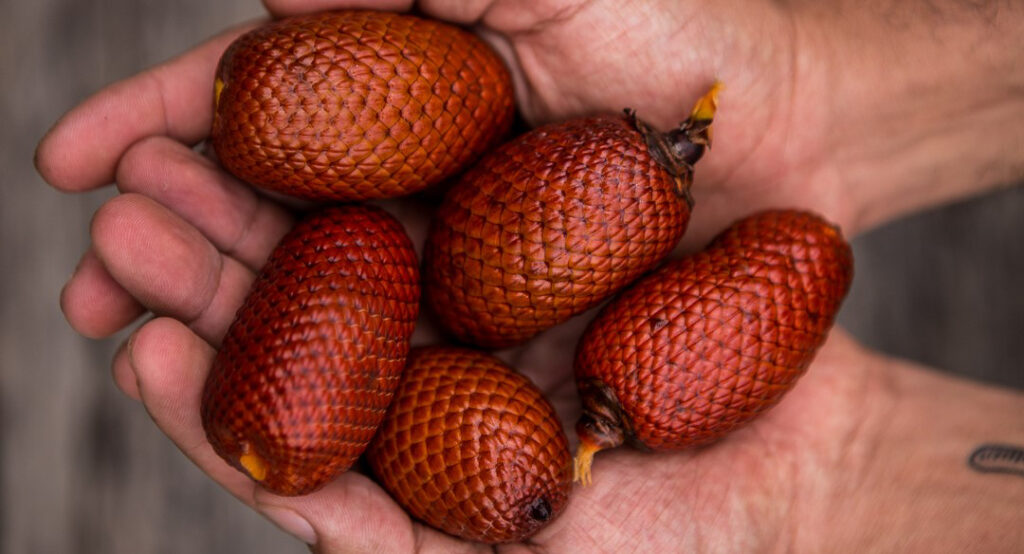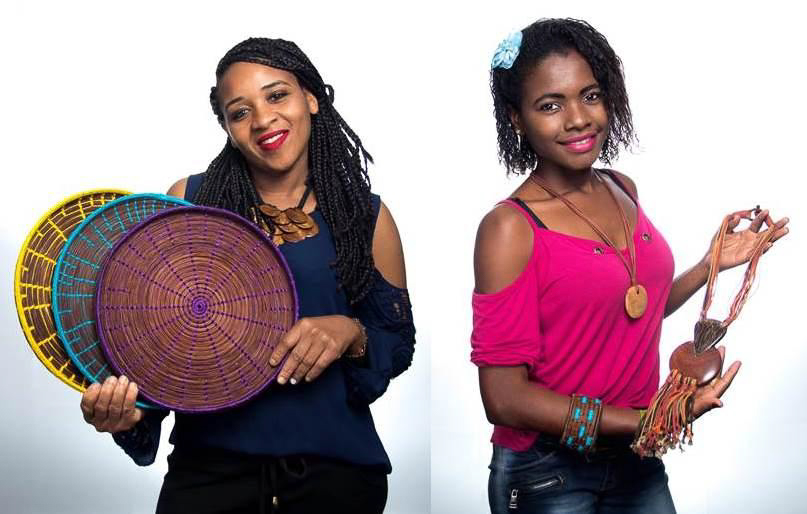
Egnaldo Rocha da Silva finds that crafts play an important role in reviving the piaçave tree for descendants of Brazilian communities of escaped slaves.
The Attalea funifera Mart. palm tree, the scientific name for piassava or piaçaba, as it is popularly known in Bahia, is endemic to the coastal region of the Southern Lowlands and Southern Coastal identity territories of the state. When travelling through the remaining quilombola, fishermen, shellfish gatherers and Indigenous communities present in these territories, it will be impossible not to notice their presence in the natural landscape of the region.
The fibre is commercially taken from the piaçave tree and used to make brooms and handicrafts. The fibre bark itself is used for kiosk coverings. From the seed or coconut, three by-products are subtracted. Starch is produced from the coconut shell to produce delicious hominy. And the coconut is used to make charcoal and handicrafts (biojewelry).

The extractive management of piassava in the region is an ancestral legacy of the original people who inhabited this territory when the colonizers arrived. When Prince Maximiliano de Wied-Neuwied visited Olivença (Ilhéus) in 1817, he observed that “one of the main branches of industry of the inhabitants of Olivença” was the manufacture of “rosaries, which they make with piaçaba coconuts”, adding that “its fibres provide sailors with extremely durable rigging that defies both storms and humidity; its fruit feeds the inhabitants of various regions of this coast. The existence of an entire tribe, the Guaranis, is linked to the existence of this palm tree.”
As in all corners of Brazil, with the advance of colonization of the territory, men and women, black men and women, kidnapped from the African continent to be enslaved in these parts also arrived here. Once here, they constructed strategies to regain their freedom, with the formation of quilombos being the most recurrent. It was in the colonial villages present in these territories where the formation of quilombos most proliferated in Bahia. Currently, many of these communities survive from piassava extraction.

Until the last decades of the twentieth century, the extraction of piassava for the production of brooms was the main activity. In some cases, the only source of income for these remaining quilombola communities, until, gradually, the fibre began to lose market value, making its extraction no longer viable. This put at risk not only the survival and physical and cultural reproduction capacity of the communities, but also the ecosystem itself (Mata Atlântica), since the piassavais began to give way to more profitable crops, such as cocoa plantations. The remaining quilombola community of Lagoa Santa, located in the municipality of Ituberá, is an example of a territory that experienced this process.

In this context, an alternative to this reality that has been adopted by communities is the production of handicrafts, both from braided fibre, as well as biojewels, from coconuts. Santilia Ramos dos Santos, 61 years old, remains hopeful about the new and optimistic possibilities that crafts are bringing: “I’m still fighting today, I believe that crafts will still help me, I believe”.
Someone who has also stood out in the community is young Daiane Conceição dos Santos, 26 years old. She produces biojewels using piaçava coconut as its raw material. She sells her production online (@lagoasantajoiasdoquilombo) and at craft fair circuits in which she participates. In 2022, Diane was one of the winners of SEBRAE’s TPO 100 crafts award.

With the production of handicrafts, the diversification of the piassava production chain has materialized, creating new income perspectives for community members with the potential to help young people remain in the community, alongside their parents.
Crafts can also contribute to maintaining a way of life integrated with the environment, maintaining the viability and sustainability of piassava extraction. But for this to be a viable reality, it is necessary to implement public policies aimed at promoting the dissemination of production and, above all, expanding marketing channels.
This is a translation of an article that originally appeared in Artesol.
Note
A quilombola is an Afro-Brazilian resident of quilombo settlements first established by escaped slaves in Brazil. They are the descendants of Afro-Brazilian slaves who escaped from slave plantations that existed in Brazil until abolition in 1888. The term “quilombo” comes from the Kimbundu word kilombo, which means “war camp”. These settlements ranged from small hideouts where several slaves concealed themselves from their masters, to vast, organized communities that housed and protected thousands of runaway captives
About Egnaldo Rocha da Silva
Egnaldo Rocha da Silva is a quilombola and quilombola for educational and cultural causes. PhD in History from the Pontifical Catholic University of São Paulo (PUC-SP); author of the book “Black communities: conflict and struggle for land in Baixo Sul da Bahia (1950-1985)”, publisher Annablume, 2019; Cultural Manager of the Municipality of Ituberá-Ba.

